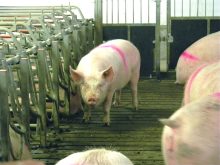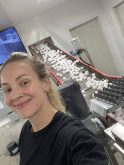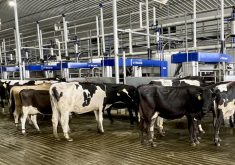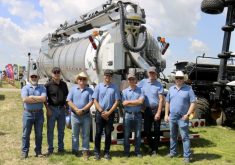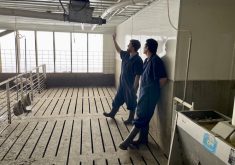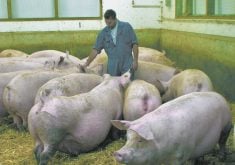Is it better to invest in a parlour or robots? It’s a question many dairy farmers are facing as they consider their next expansion and make future plans.
The answer depends on labour availability and personal preference, according to a team of national accountants who have recently developed financial benchmarks for both milking systems. The data indicates that financial performance should not be a significant factor in choosing a system because the profitability of robots compared to parlours is very similar.
Why it matters: New financial benchmarks debunk the myth that milking robots are more expensive to operate than parlour systems and provide dairy farmers with valuable information to improve investment decisions.
Read Also

Dissolving eartags could make pig traceability easier
A dissolving eartag for market hogs, called Clean Trace could reduce processing challenges and enable more individual management of pigs.
“There is a perception that robotic systems are more costly to operate than parlours but our benchmarking numbers show that both systems make about the same profit,” says Francois Bourgeois, BDO partner in Embrun, Ont.
This new information is catching many farmers by surprise and giving them reliable, unbiased data to analyze and use in cash flow projections.
Based on 2020 data from dairy farms across Canada, the average gross revenue generated by farms with robotic systems was approximately $1.5 million, with milk and cream representing 79 per cent. Farms with parlours generated an average of $2.1 million, with milk and cream representing 81 per cent.
BDO’s benchmarking analysis divides the income statement into four cost categories. The cost of goods sold benchmark for both systems was 32 per cent of income. Comparing robots and parlours, direct operating costs represented 28 per cent and 32 per cent of income, overhead costs represented eight per cent and five per cent of income and capital related costs represented 24 per cent and 21 per cent of income, respectively.
“When we add all expenses, the income before other items was 8.11 per cent for robotic farms versus 9.17 per cent for parlour farms,” Bourgeois says. “The total difference is not significant so we know that one system is not automatically more expensive or cheaper than the other.”
Direct operating costs were higher on farms with parlour systems due to salary expenses and overhead costs were higher on farms with robots due to management salaries.
Combining all salaries, labour costs on farms with robots totaled 7.36 per cent of income and 9.24 per cent of income on farms with parlours. This means for a farm with revenue of $2 million, a robotic system could represent $37,600 a year in labour savings.
Amortization makes up the majority of the capital cost difference between the systems.
“We are likely to continue to have a labour shortage for some time so in a lot of situations where farms are short-staffed, robotic systems make sense,” Bourgeois explains.
He advises farmers to think about the future and where they see themselves in the next three to five years to help them make an investment decision. The bottom line comes down to the availability of labour and how a farmer prefers to milk their cows, he says.
Benchmarking data can also be used to measure earnings per kilogram of quota.
BDO accountants use standardized financial statements and benchmarking to provide valuable insights and support business management decisions.



